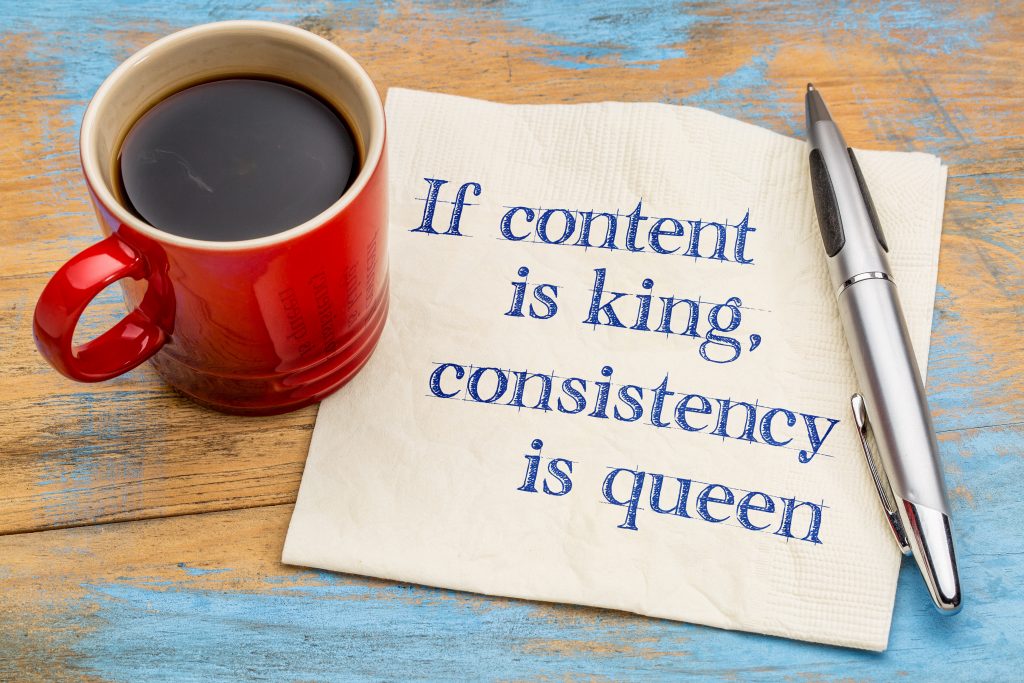So you’ve started your blog and have several posts up and running. Or maybe more than several. The point is… you’re on your way!
In your first month, your pageviews will probably look (or looked) something like this:
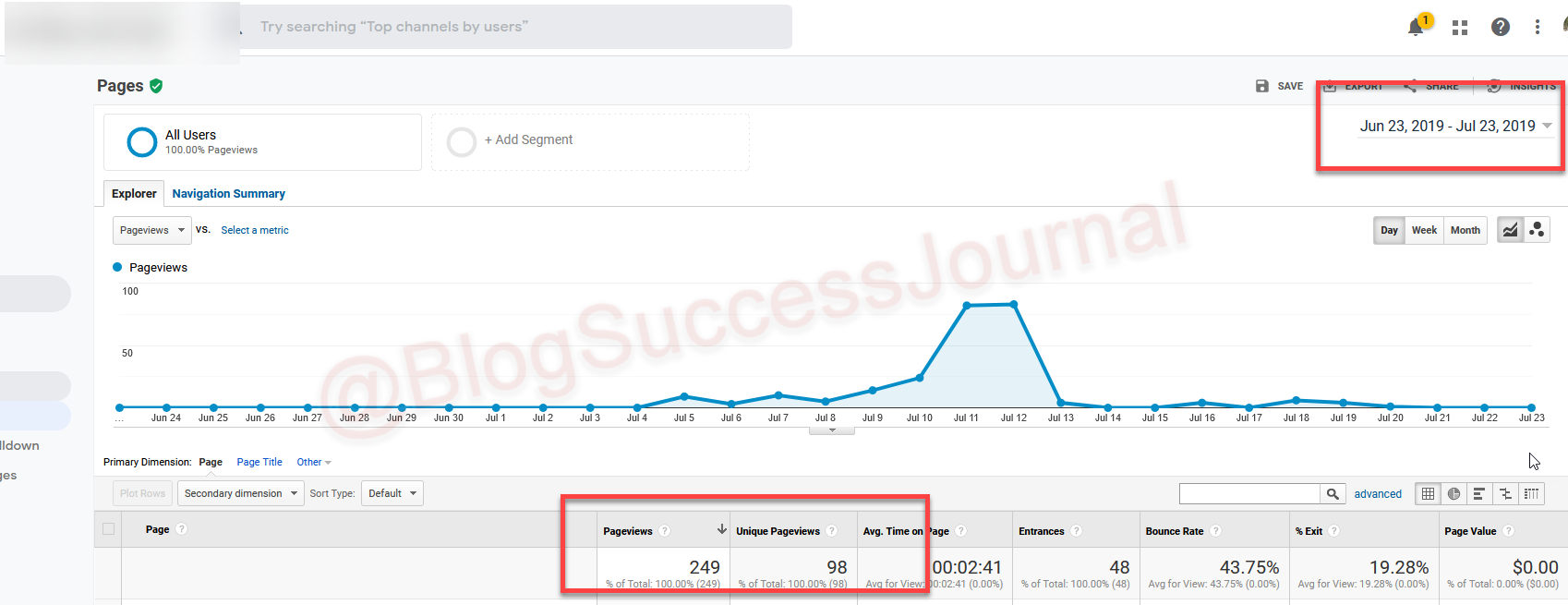
Ouch!
That valley—or chasm—is The Chasm of Death for bloggers. And because of this chasm, the internet is scattered with crushed blogging dreams.
Why?
These bloggers didn’t know they could push through the chasm of death by having a specific strategy.
But not you!
Today you’re going to learn the seven elements of a blog content strategy that will build a blogging business you love.
Here are the steps:
- Become a Pro Writer
- Choose an Appropriate Publishing Routine
- Determine Your Blog’s Breadth
- Decide Your Content’s Depth
- Pick a Monetization Strategy
- Determine a Backlink Strategy
- Strategically Improve the Right Content
Your results one year later?
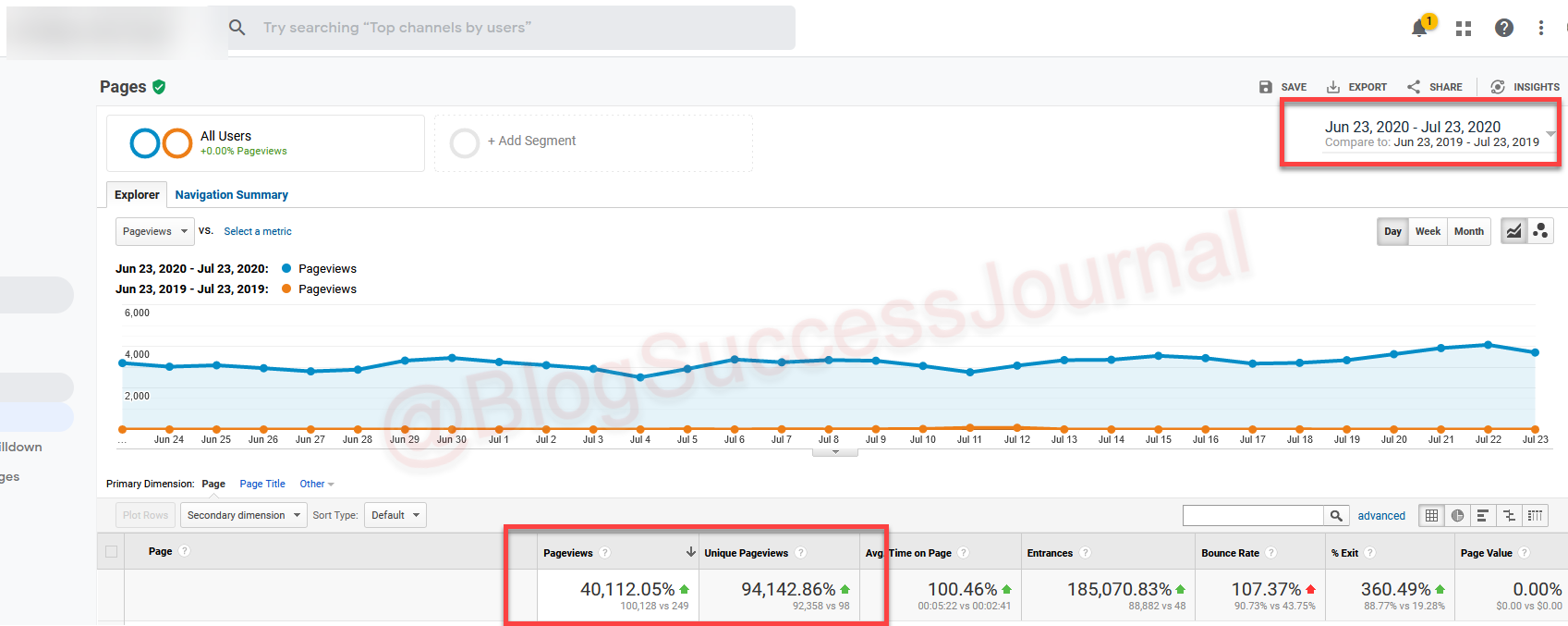
Boom!
Let’s dive right in!
1. Become a Pro Writer
Bloggers do one thing: They publish blogs.
But publishing blogs means incrementally improving in
- writing,
- SEO,
- connecting with readers
and other metrics with each published blog post.
At the foundation of all those skills you will develop over time is simply this,
- Writing at consistent times each week regardless of how you feel about it.
A key to your blog success is creating a habit of writing.
How do you Develop a Writer’s Habit?
With a 90-day challenge.
When done correctly, challenges are launchpads for new habits.
The correct way to form a writer’s habit is not with some arbitrary metric of “write 2k words in one hour” or something silly like that.
A better 90-day blogger’s challenge is to determine how much time you will commit to write each day for the next 90 days.
Will it be 15 minutes? 45 minutes? 1.5 hours or more?
How Fast Do You Want to Improve?
This habit of writing will be the fastest way for your unique writer’s style to emerge.
So decide how long you will write each day. Maybe you need to ease your way into it first.
The first week you’ll write for 15 minutes each day. The next, for 45 minutes. By the third week you’ll be ready to lean into 1.5 hours.
Set aside a specific time every day to do this. Plan it. Write it down. Stick to it.
Want more ways to increase your writer’s style? Check out more SMART writing goals here.
2. Choose an Appropriate Publishing Routine

What do bloggers do?
They publish blogs.
This is another trap all creative endeavors fall into. Ideas, research, thinking about the article, chicken scratching… is not the work.
Publishing is finishing the work. It’s the end goal.
What’s your first blog strategy?
A strategy that is focused on publishing 100+ blog posts as fast as possible!
But don’t start yet, you need steps three and four to crush these 100 blogs.
It’s important to note that you don’t want to plan these 100 blogs a month or quarter in advance. And you definitely don’t want to plan a year’s content strategy!
How do you race to 100 posts without planning a quarter?
You plan your content for one week in advance.
Why?
Why One Week Ahead Always Wins
Your hunter-gatherer ancestors planned day-to-day and season-by-season… not months or years in advance. You are wired the same way.
Life happens… some good, some bad.
For instance, you might overwhelm yourself, or your content strategy skills could have grown since the last time you planned.
You don’t want to be stuck with an outdated plan. Right?
That’s a waste of time that could’ve been spent creating the content you’ve planned for next week.
The ONLY time you should get further ahead than that is when you are outsourcing your writing—hiring writers to write for your blog.
As a solopreneur, focus on one week.
Here’s How To Do It
On average, to research, outline, write and publish a blog takes around four hours.
What this means is, depending on how much time each week you allocate to writing, is the variable of how many blog posts you can publish weekly.
Right now, decide what your strategy will be.
Will you work towards
- 100 published blog posts in the next few months, or
- 100 published blog posts this year?
100 blog posts in the next year means publishing around two blogs every week. You can crush that!
100 blogs in 6 months would mean publishing a blog almost every other day.
Only you know the amount of time you’re willing to commit.
Once you’ve made this decision, then you’ll know if you need to publish 2 or 3 blogs next week. Or if you’ll publish 7!
Regardless of which you choose, your next question is most likely,
What two, three, five blog posts should you publish next week?
Here’s how to choose.
3. Determine Your Blog’s Breadth

Coming up with new topic ideas is often challenging.
While it’s a good idea to narrow your topic when writing an article, it’s generally a bad idea to plan your content strategy with a narrow view.
You want to determine the breadth of your blog.
What does this mean?
Here’s an example. Say you are blogging to raise awareness of the need to save the wildlife in Africa. You will want to cover every nook and cranny within that broad topic.
Think of every feasible direction your topic can take.
For example, a topic question such as…
What happens to adolescent male lions that get kicked out of their pride?
That’s too narrow to have a long-term content plan around.
However, if we begin with a topic question such as lions…
Your mind is already thinking… what about lions?
This is critical for two reasons:
- Your blog will not be successful if you try to target the entire world
- A wide enough for many topics, but focused breadth is a Google ranking factor
Look:
“Cultivate a reputation for expertise and trustworthiness in a specific area.” are words that Google uses to convey an important ranking factor in their SEO starter guide.
You want your blog to build expertise and trustworthiness in a specific area as opposed to being too general.
In addition to being a ranking factor, the more specific your article breadth is, the quicker you can make money.
Let’s go a little deeper with this in the next tip.
4. Decide Your Content’s Depth
You want to avoid creating isolated, standalone, orphan content, why?
Orphaned content is when a piece of content you create has no connection or end goal to the overall theme of your blog.
It’s like this:
An ice cream shop selling fried chicken and whiskey at random time intervals.
See how that can create confusion?
To solve that:
Focus on creating content that is relevant and can be repurposed and explored.
Back to the raise awareness of the need to save the wildlife idea.
The breadth is saving wildlife but the depth could be the different animals.
Lions, leopards, gorillas, etc.
By choosing 2-3 or these animals and going deep in those first will create “a reputation for expertise and trustworthiness in a specific area.”
You will become the endangered lions expert more quickly than becoming the endangered wildlife guru in the world.
But, when you create these “hubs” on your blog one, two, three at a time, a few years from now, you will be the endangered species guru in the world.
This will also help you make the most money more quickly.
Here’s how.
5. Pick a Content Monetization Strategy

What you can hopefully see is your blog’s content is going to be made for a specific type of individual.
This is called your avatar: a person that represents the pool of individuals who will be reading the content of your blog.
When you learn what your avatar’s hopes, dreams, and desires are, you can connect the dots between what products and ideas they need to learn about in order to accomplish those goals.
Many of these steps require articles to take her from point A to point B, and in the process she needs to buy either courses from you or someone else, or physical products like books, tools, toys, makeup, etc
If You Focus on Specific Content Themes…
Guess who becomes an authority figure in that specific field that you’ve written so much about?
YOU DO!
Your blog post content can turn into a book! Maybe even more than one over time.
So imagine…
What 3 or 4 books do you want to have written on your blog?
It may sound overwhelming right now, or even impossible, but a typical book contains 60-90k words. Right?
Break that up into 2,000-word chunks and you have approximately 35-40 blog articles!
Multiple posts that connect with your target audience that have a beautiful, engaging, clear target for your blogging business.
On top of that…
Here’s more ways to grow your authority and make money from your content.
A Few Monetization Options
The important grassroot element to grasp in determining your blog content strategy is:
- to connect the dots between the blogs that you write and
- whether those blog posts connect you with the right kind of individual that you can sell more than one item to.
These dots are hard to connect for a while, and as you continue to write topics under the breadth and depth of your preferred content, this perfect avatar will begin to emerge. You will start to see him or her even more clearly.
When you reach your perfect avatar and focus on that big topic with depth, your readers will be interested in and need everything you suggest from a tube of chapstick on Amazon to weekend conferences.
This is called a value ladder: you offer cheap products, mid-price products, expensive products, and high ticket items that each help your avatar accomplish a goal in their life, receive a transformation.
Many of these steps would be written in the form of a how to post.
Additionally, many people already know the how to, but they are unsure of what tool, software, or makeup is the best one, so they Google, what is the best tool to do x job?
You can receive referral commissions on almost all of the products just mentioned by simply providing a link for your avatar to buy the product in your blog post.
This is called affiliate marketing. For a deep dive on how to get this set up, click here and read this post.
In addition to making money with affiliate marketing, you are going to become a trusted advisor to many of your blog readers.
How will you interact and help those readers more thoroughly?
As mentioned earlier, you can write a book and sell it.
Another avenue, and one of the best ways for bloggers to monetize is through online courses.
Which is what? A whole string of “how to articles”, typically turned into videos, pieced together into one big “how to course.”
These are called information products, and they are some of the most profitable products to create.
How?
When you create an ebook, another type of information product, the cost to duplicate that ebook and sell more of them is zero.
When you create an online course, the money required to sell more copies of your course are incredibly low.
There are even platforms that allow you to create and sell these courses and other information products for absolutely free.
Connect the Dots
But at the core of blog monetization is a bunch of content, mini transformations, and blog traffic.
Focus on breadth… the big idea… then go deep, deep, deep!
So decide what two, three, five, seven, blog posts you will publish next week.
And when Thursday the next week comes around, which blogs will you publish the following week?
Here are two more strategies to help you get more traffic to your blog.
6. Determine a Backlink Strategy
Backlinks (sites that link back to your content) are one of Google’s biggest ranking factors.
More quality backlinks = Better rankings and higher domain authority
Here are two strategies to build backlinks safely:
- Find trustworthy sites in your niche that have high authority and guest post on them. Check out this complete guide to see how!
- Get people to link back to your site organically by writing the most interesting and helpful blog posts ever!
Here’s how to come up with some ideas to write interesting and helpful blog posts easily.
To find some great topics for this, type “How to <insert your keyword/topic>” into Google and look at the suggestions that pop up.
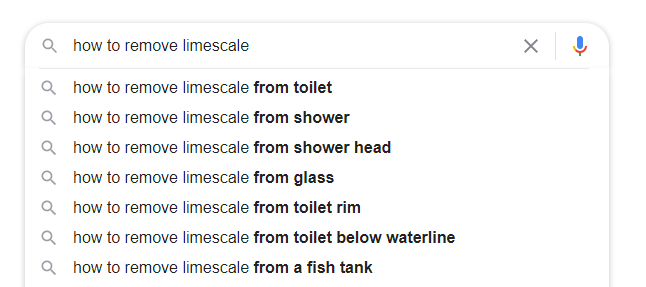
Do this for a lot of crazy specific keywords (maybe 20-30) that are within your content themes.
Your overall site ranking will improve from the naturally free backlinks you’ll be stirring up, and you’ll receive more traffic for Google because of these keywords. Which means even more visitors for you!
7. How to Strategically Improve the Right Content
After you have written quite a few posts, it’s time to go back and start upgrading older posts. Those that are doing well can be rewritten and added to to help them perform even better!
Let’s look at how to do it!
Google Search Console is a web software service that allows you to optimize the visibility of your website to Googlers.
If you don’t have your blog connected to Google yet, you will need to do that first and this video will show you how.
How to find keywords your blog is ranking for:
Once you’re in search console, click the “performance” tab to your left. There you’ll see a line chart depicting your site corresponding to total clicks, impressions, average CTR, and position.
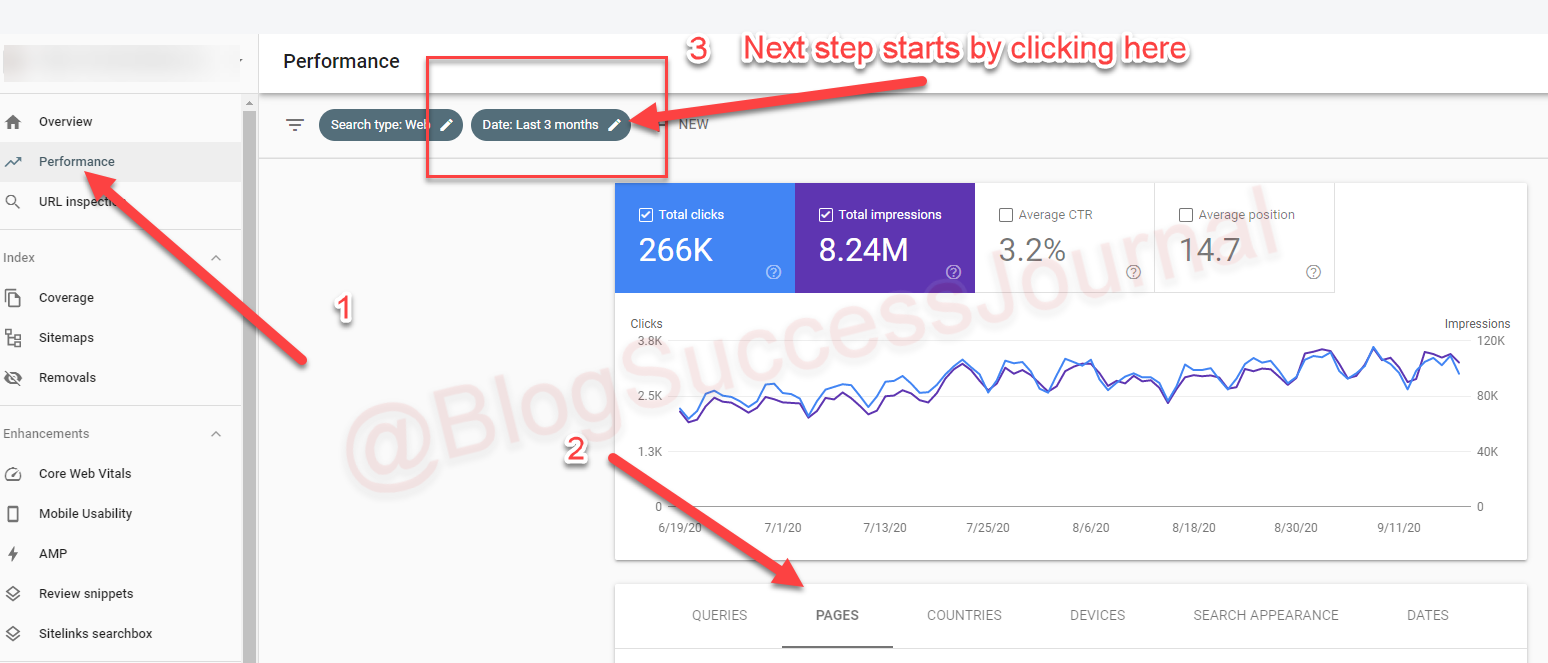
Click on compare and choose either last 28 days to previous period or last 3 months to previous period if you’re new.
If your site is over a year old, using year over year is best because it will avoid seasonal trends data.
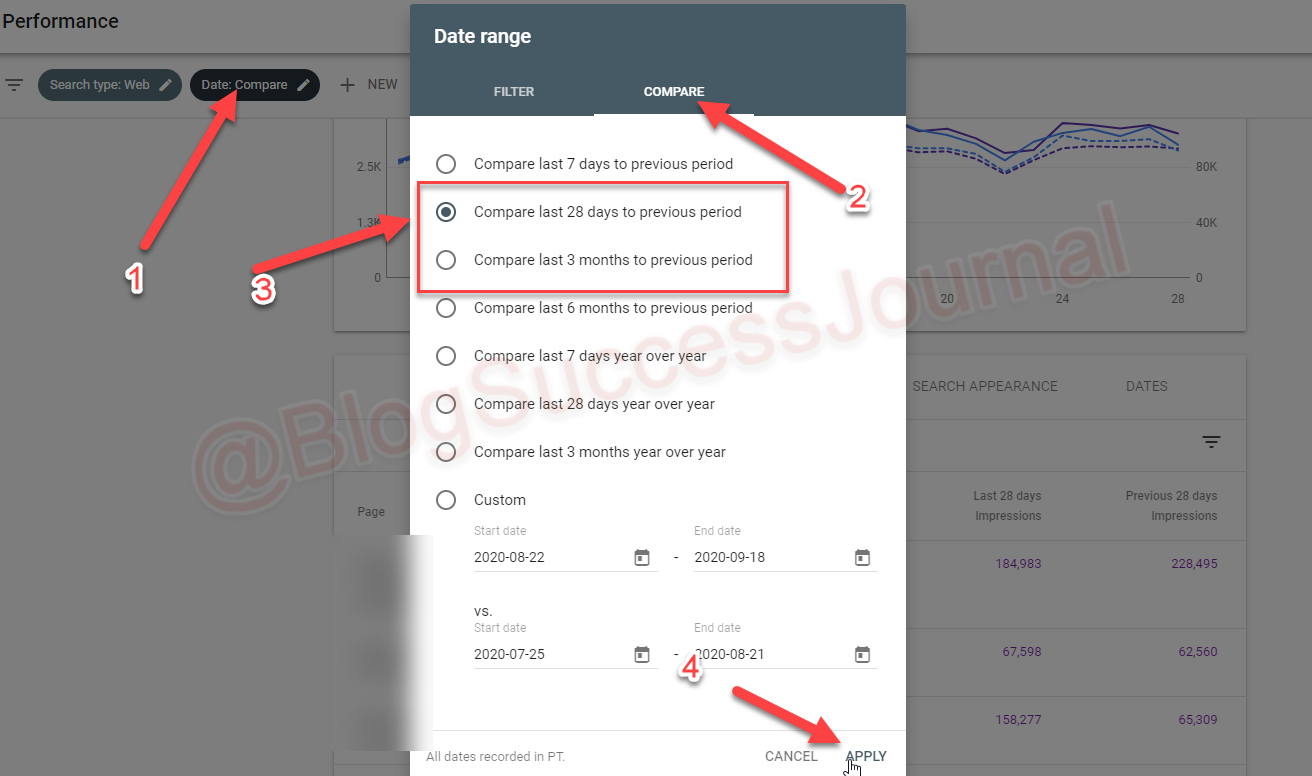
Some of the differences will be seasonal and trends, but you can quickly scroll till something like this pops out at you—drastic improvement from the previous 28 to the last 28.
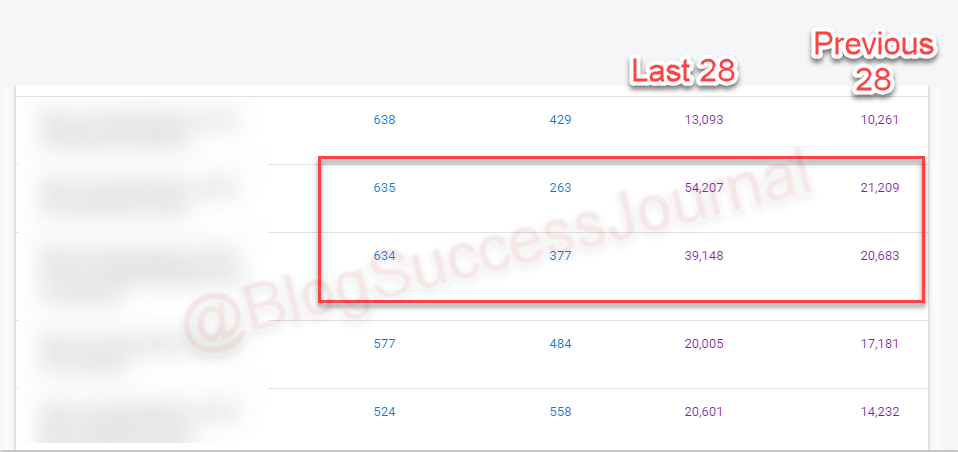
These two received double the impressions!
Is it seasonal or is it because the posts are climbing the ranks?
Google trends will show you the answer, but you can also use common sense here!
These two are not seasonal.
After you choose a page that is gaining traction, click on it, and you can see the primary keyword it’s ranking for:
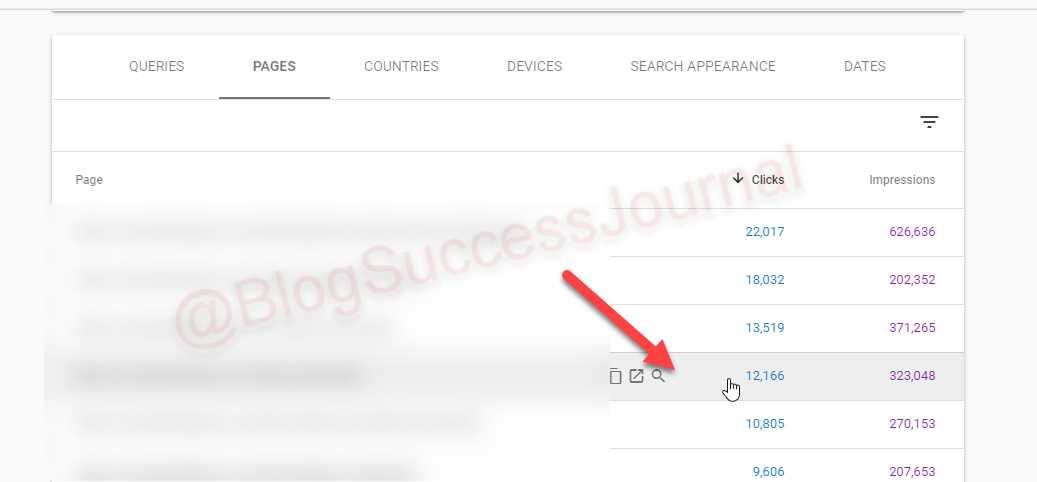
Then click on queries:
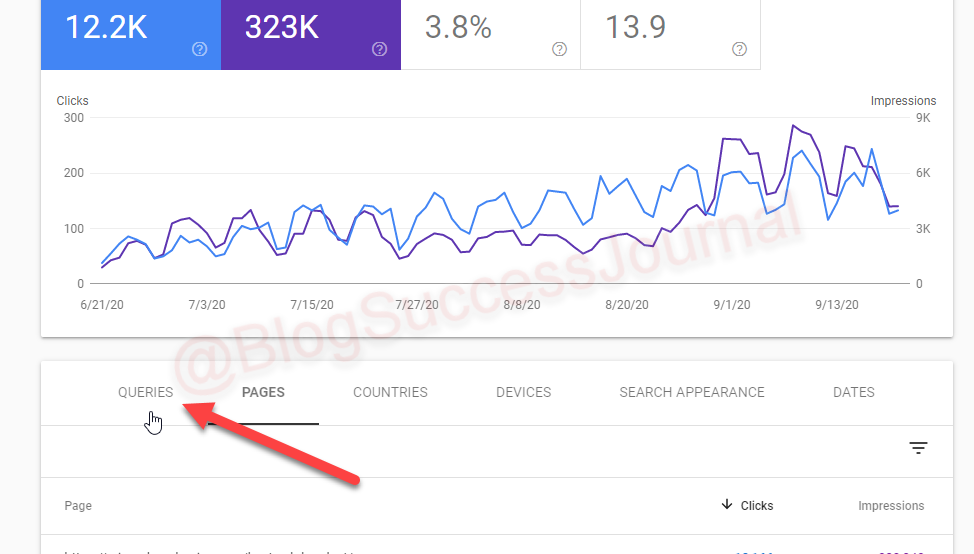
And you can sort by impressions and see all of the keywords that post is ranking for on Google.
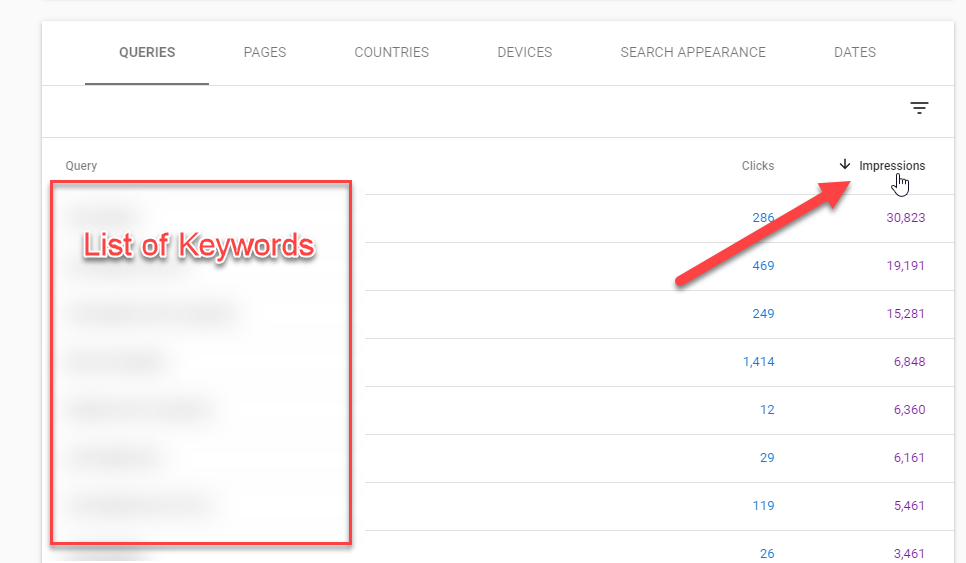
Rank for More Keywords by Improving Content
Now that you know which post(s) you want to improve, what should you do next?
Two things:
1. Google the keyword you are ranking for and want to improve in incognito and look at the competition.
Why are they beating you? More content, a better title, a better meta description?
Most of the time it’s because they have more content and are answering more questions in the post.
2. So now you need to improve your post to “beat” the competition.
If they have more content, where can you find more content ideas for your post?
From the other keywords in this Google Search Console list that Google is ranking you for.
Grab 3–4 of them, create variations of those keywords to use as new headers in your article. Then add a couple of hundred words talking about those new headers.
After that, change your title. Upgrade your intro to let new readers know there is more in the post than your prior title and intro.
Finally, change the publish date to today in WordPress and check it again in a month or so!
You can upgrade your posts like this over time as you see certain posts gaining traction. Improve those… they’re already doing good work for you.
So make them work even harder by using this guideline to improve them.
In Summary
With the correct plan of action, creating a blog content strategy isn’t complex at all.
All you need is a map and a clock.
Your map is your topic and research question and your clock is your publishing frequency.
- Decide on one broad topic and write as many questions, ideas, and topics centered around that topic.
- Then decide if you’re going to publish once, twice, or multiple times per week or month.
- Once you have posts that start ranking, how many times per month and when will you spend a few hours improving old content?
There you have it… a straightforward blog strategy to crush your goals of making money while helping the most people.

